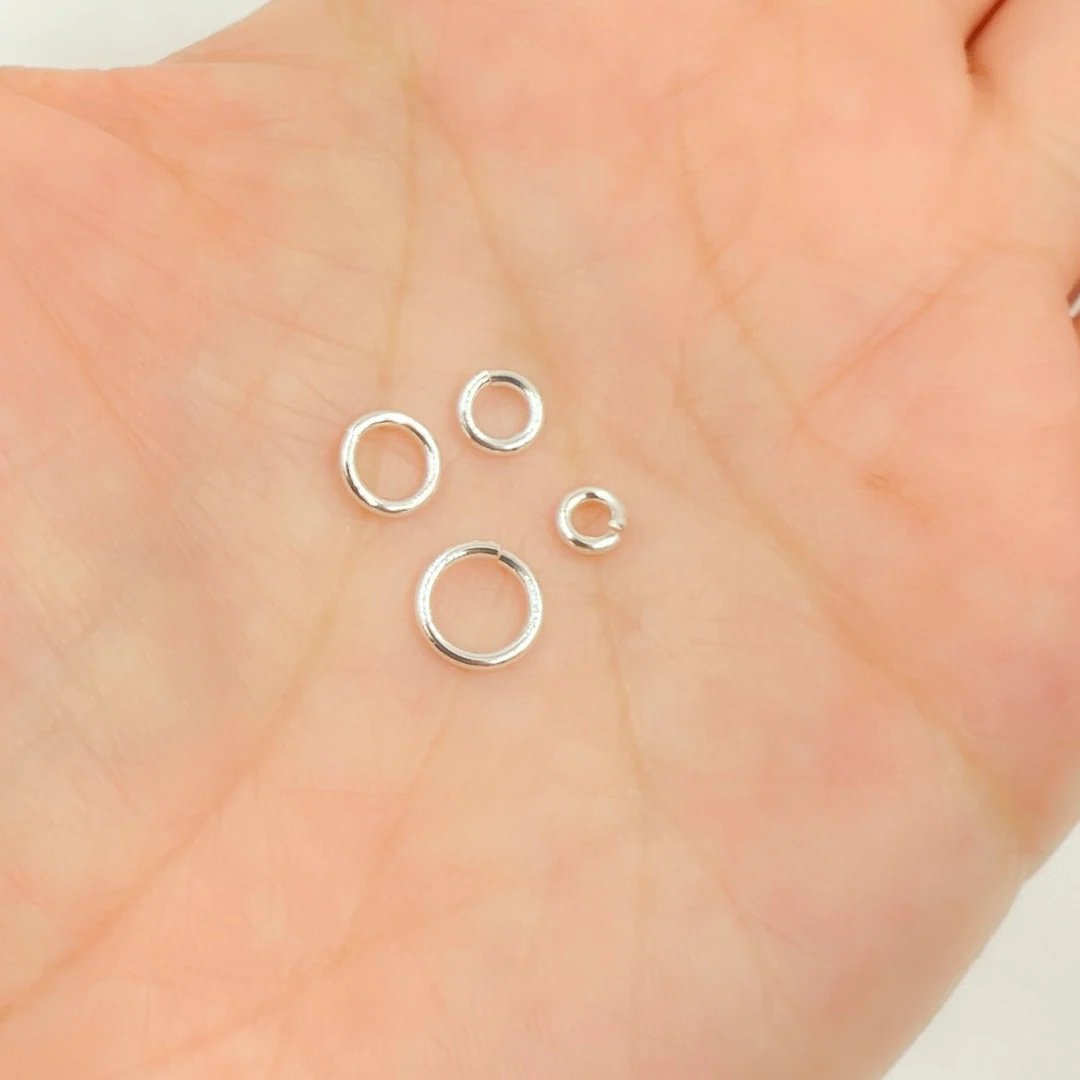A Complete Guide to Silver Jump Rings for Jewelry Making
In the world of jewelry design, every detail matters. From the sparkle of gemstones to the luster of precious metals, each component plays a vital role in bringing a piece to life. While some parts, like pendants or beads, often take the spotlight, the humble silver jump rings are the silent heroes that ensure durability, function, and elegance. These small yet mighty connectors are essential for linking chains, securing clasps, and creating intricate designs that stand the test of time.
What Are Silver Jump Rings?
Jump rings are small metal loops, typically circular, that serve as connectors in jewelry pieces. Crafted from various materials, silver jump rings are a favorite among artisans due to their classic sheen, strength, and resistance to tarnish when properly maintained. They may appear simple, but their design and quality can significantly impact the overall functionality and look of a piece.
Different Types of Silver Jump Rings
Not all jump rings are created equal. The type you choose depends on your specific jewelry-making needs.
- Open Jump Rings
These have a small slit that allows them to be opened and closed using pliers. They are ideal for connecting components that may need to be adjusted later. - Closed Jump Rings
Fully sealed rings that provide extra strength for permanent connections. These are perfect for designs that require durability and stability. - Split Rings
Similar to key rings, they have overlapping coils for added security, ensuring that connected parts do not slip out. - Soldered Jump Rings
Permanently sealed with solder, these are the strongest option, used for heavy pendants or high-stress points in a design.
Why Silver Is a Preferred Material
Choosing silver for jump rings adds not only strength but also elegance. Silver has been prized for centuries for its beauty and versatility. In jewelry making, it offers several advantages:
- Aesthetic Appeal: Its bright, reflective surface enhances the overall appearance of jewelry.
- Durability: Strong enough for daily wear without losing shape easily.
- Workability: Easy to manipulate for custom designs without breaking.
- Hypoallergenic Qualities: Suitable for sensitive skin when made with sterling silver.
Sizing and Gauge Guide
The size and thickness (gauge) of silver jump rings play a crucial role in both the visual balance and structural integrity of a jewelry piece.
- Diameter: Common sizes range from 3mm for delicate work to 10mm for larger links.
- Gauge: Thinner gauges (22–24) work for lightweight designs, while thicker gauges (18–20) are ideal for heavy-duty applications.
Choosing the right combination ensures that your jump rings are proportionate to the rest of your piece and can support the intended weight.
Common Uses in Jewelry Making
Jump rings may be small, but their uses are extensive:
- Connecting Clasps to Chains: A fundamental role, ensuring closure mechanisms work seamlessly.
- Attaching Charms and Pendants: Providing movement and flexibility in designs.
- Creating Chainmaille: Used in elaborate patterns for decorative jewelry.
- Repair Work: Ideal for fixing broken chains or replacing worn connectors.
Opening and Closing Techniques
One of the most important skills for any jewelry maker is opening and closing jump rings without distorting their shape. The correct method involves:
- Using Two Pliers: Grip the jump ring on either side of the slit.
- Twist, Don’t Pull: Gently twist one side forward and the other backward to open.
- Reverse Twist to Close: Align the ends until they meet perfectly.
This method maintains the ring’s circular integrity and prevents gaps.
Finishes and Coatings
While plain sterling silver is popular, silver jump rings can also be plated or given special finishes:
- Oxidized Silver: Adds an antique, vintage appearance.
- Polished Silver: High-shine for modern, sleek designs.
- Matte Finish: Understated texture for subtle elegance.
Selecting the right finish can complement your overall design theme.
Maintaining Silver Jump Rings
Even the highest-quality silver can tarnish over time due to exposure to air, moisture, and skin oils. Proper care includes:
- Storage: Keep in airtight containers or anti-tarnish pouches.
- Cleaning: Use a silver polishing cloth or mild soap solution.
- Avoid Chemicals: Remove jewelry before swimming or using cleaning products.
These steps will preserve the shine and longevity of your jump rings.
Creative Design Ideas
Silver jump rings aren’t just connectors—they can be design elements themselves. Innovative jewelry makers use them to create:
- Chainmaille Bracelets: Interwoven patterns made entirely from jump rings.
- Layered Necklaces: Multiple strands linked together for depth and dimension.
- Geometric Earrings: Rings linked in shapes like triangles or hexagons.
- Beaded Frames: Encircling beads or gemstones for decorative effect.
Buying Guide: What to Look For
When purchasing jump rings, especially in bulk, consider:
- Material Quality: Ensure they’re genuine silver, not silver-plated, for better durability.
- Precision Cutting: Smooth edges and perfect circles are signs of good craftsmanship.
- Uniform Size: Consistency is key for a polished, professional look.
- Supplier Reputation: Trusted sellers like Jewels And Chains offer reliable quality and a wide variety of sizes and styles.
Eco-Friendly and Ethical Sourcing
Many modern jewelry makers are concerned about sustainability. Choosing suppliers who use recycled silver or follow ethical sourcing practices ensures your creations are both beautiful and responsible.
Why Jump Rings Deserve More Attention
Though they may seem like minor components, jump rings can make or break a design’s durability and aesthetic flow. A poorly made ring can compromise the entire piece, while a high-quality silver jump ring elevates craftsmanship and ensures longevity.
Conclusion
From their practical role in holding pieces together to their potential as decorative features, silver jump rings are indispensable in the art of jewelry making. By selecting the right size, gauge, and finish—and by sourcing from reputable suppliers—you can create pieces that are both stunning and built to last. Whether you’re a professional jeweler or a hobbyist, investing in premium-quality jump rings ensures every creation is as enduring as it is beautiful.
